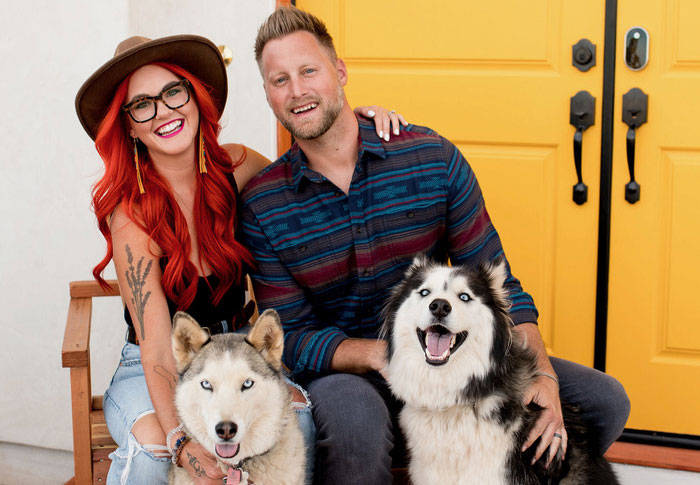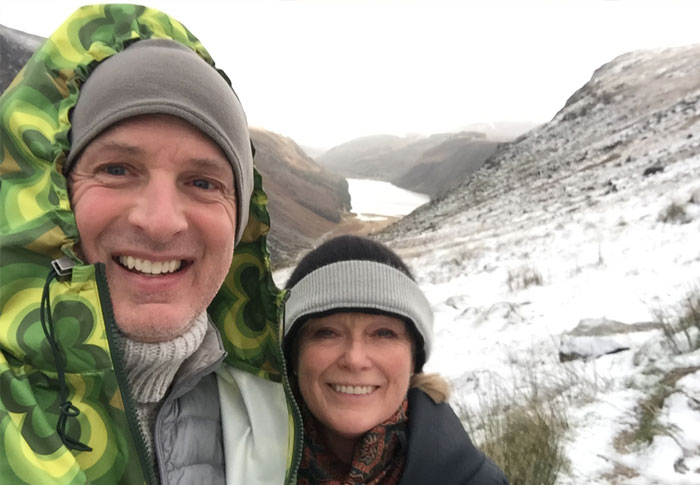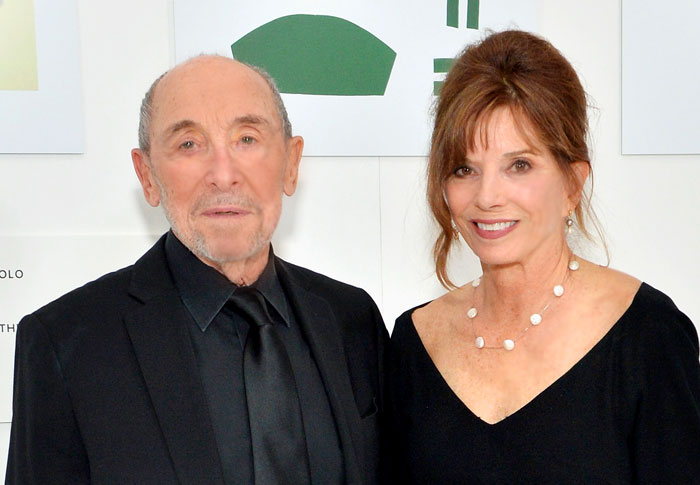By Anna Wyckoff | February 10, 2020
Pay Equity – We Can Do It
The truth is in the frame. What do you see? There may be an establishing shot: the bucolic town, the filthy jail, the seedy hotel room. But next, you always see the actor. More often than not, the camera chases the subject from scene to scene because time is short and this is how a story is told. In any shot framing the actor, the costume is present. Even a lack of costume is carefully considered by the Costume Designer. Actors are intrinsically linked to their costumes. These are the unspoken rules of film and television.
Why state the obvious, you may ask? Because it is vital to the conversation. In the flurry of preproduction—breaking down scripts, researching, the journey of finding the character with the actor—their employment contract is often far from the Costume Designer’s mind.
Pay Equity is defined as equal pay for work of equal value. This is a long-standing American ideal. In Costume Design it translates to being paid the same as other heads of departments such as the art director, production designer, and cinematographer. Presently, Costume Designers are paid less than their peers. The issue is further compounded by the existing politics of gender. While women makeup the majority of the field (approximately 83 percent), all members suffer from the same issues.
One vital component, which hasn’t been included in the discussion, is the added value Costume Designers bring. No other aspect of a project’s physical production so readily creates excitement before, during, and following the production and screen time. Audiences care about Costume Design. That matters because attention online, in magazines, and social media as well as the influence on fashion, translates into more eyeballs on screens. With the knowledge that pay negotiations are rarely an easy subject for creative people, we have spoken to four of our esteemed colleagues to discuss their views on problems and potential solutions for complex issues. This is the first installment of an ongoing discussion of pay equity in The Costume Designer Magazine.
Dr. Deborah Nadoolman Landis
The David C. Copley Center for Costume Design at U.C.L.A.
When Dr. Deborah Nadoolman Landis considers the collaborative partnership between Costume Design and art direction, she sees them paired, as yin and yang. What she finds irreconcilable is that the contract does not reflect that relationship. Instead, it suggests the set is more valuable because the people who create the world are paid more. As she investigated this discrepancy, Landis realized, “In the wider world, architecture is so valuable and such a male pursuit. Fashion design [and subsequently Costume Design] is seen as a female pursuit. It’s the power of the hammer as opposed to the power of the needle, the people who wield the hammer are paid more and seen as more important than people who work in soft industries.” It was during her presidency of the Costume Designers Guild that she made the connection to gender. “Many sleepless nights later, I thought, ‘Oh, my goodness, this is gender at its very core,’” she exclaims, “I was so disappointed because I understood immediately that this would be far more difficult to change.”
But Landis does believe change is possible and has campaigned tirelessly to that end. She feels a Costume Designer needs to know what other people are getting paid. She says, “I think we need that kind of shock in common. It takes us so long to accrue the hours for retirement. We need to know how long it’s going to take. We need to know what our pension is. We need to personally advocate for equity. Also, we have to challenge our agents, representatives, and managers and give them the language to then challenge the studios. We work in the world of women and we’re being paid as women’s work, whether we’re male or female. So women producers and women executives need to understand where we’re coming from.” Landis feels we need to seize and amplify the zeitgeist of the moment to demand equality.
Salvador Perez
President Costume Designers Guild
Initially, President Salvador Perez thought pay inequality in film was unique to Costume Design. As it was recently revealed that female actors were being paid significantly less than male actors, he realized that the disparity is “blatant sexism.” Perez says, “It seems like if there is ever a moment with an awareness of this, it’s right now. Costume Designers don’t get paid as much as production designers even though what we do is equally important. Production designers simply don’t have to deal actors the way Costume Designers do. I don’t want to take anything away from production designers and what they contribute, but the media doesn’t talk about the set, or about set decorating. The media talks about Costume Design.” Perez feels the buzz generated by Costume Design offers instant PR for shows. Additionally, there are ancillary markets like toys and fashion line spin offs which have proven hugely lucrative.
For Perez the solution is a multi-step process that is not simply about the contract negotiating table. “It’s about added value much the same way an actor with a social media presence has more cache,” he explains. Perez believes in strong personal branding, because with public acclaim comes a higher perceived value. “Some of us are not accustomed to marketing and social media, but we have to adapt. It is now part of our job. We need to learn to make ourselves the asset,” he asserts.
Betty Pencha Madden
CDG Local 892 Labor Delegate and CDG Organizer
Betty Madden reminds us that voting equality was hard won and fairly recent in the scope of history. She says, “In the beginning of the United States, women were not even a consideration. We, the suffragettes, earned our right to vote 100 years ago and it has taken the next 100 years for us to reach today where we now have over 100 women representing us in our national government.” Madden grew up on a farm where women and men worked side by side, so she has always had an expectation of equality. When she pursued Costume Design, the field was dominated by men. Tragically, Madden lost 19 colleagues in the space of a year when the AIDS epidemic forever changed the dynamic. She says, “Those beautiful souls were lost to us and we had a huge void, which was filled with female designers. But, one of things I had in my favor, is early on I was mostly exposed to male designers. When they negotiated a contract, they didn’t start with the floor (union scale), they didn’t even look at the floor, and their producers didn’t expect them to look at the floor.”
Madden feels we need to have a real conversation about self-worth. She wants to educate members. “We can’t change this for them,” she explains. “We as individuals have our own choices in how we go forward with the skill set that we have, how we promote ourselves, and how we determine our economic rewards for the job we do. A guild cannot take up the mantle of pay inequity. It has to start with each individual within the organization.” She wants to empower members to work together as a community, and always know their value. “Never ever accept union scale, union scale is the floor. Why would you stand on the floor if you can reach for the ceiling?”
Rachael Stanley
CDG Executive Director
Executive Director Rachael Stanley contextualizes the problem historically explaining that when the CDG negotiated their first contract they were not paid significantly below an art director, but since the difference was based on a percentage, over time the gap has grown. She also thinks the problem is compounded by the familiarity many people have with clothing. She says, “They feel because they can dress themselves, anyone can be a Costume Designer. Anybody can put together some clothes and make it look good, but not just anybody can create a character. It’s a very different process.” This misconception diminishes the perceived value of a Costume Designers work and has further complicated the equation of pay equity.
Stanley also discourages the notion that nothing can be done about this issue. She remarks, “When I sit in negotiations with the producers, I bring up this problem. I say, ‘we’re paid so much less than our friends the art directors. But when you look at billboards, what do they feature? The actors dressed in the costume. I am not diminishing the role of art direction. It’s a vital part of production, but they sell so much of the movie off of the Costume Designer’s work.” Stanley thinks our membership should band together to demand higher wages because individually, we can succeed with the producers in a way that is difficult at the negotiating table. She wants to encourage our members to become more empowered by supporting each other and sharing wage information because that is an important part of their bargaining ability. “We have to be willing to shed our fear of talking about money and to put aside our belief that our value is tied to how much we make, because it’s not. It has very little to do with our talents. It has to do with how able we are to work and negotiate deals. I believe that is a vital part of really bringing up our rates.” Stanley is encouraged that she has recently seen progress. “People are making better deals than I saw in the past, and I really hope that our members will continue to push that envelope, and recognize their own self worth, and recognize their own value on production.”







